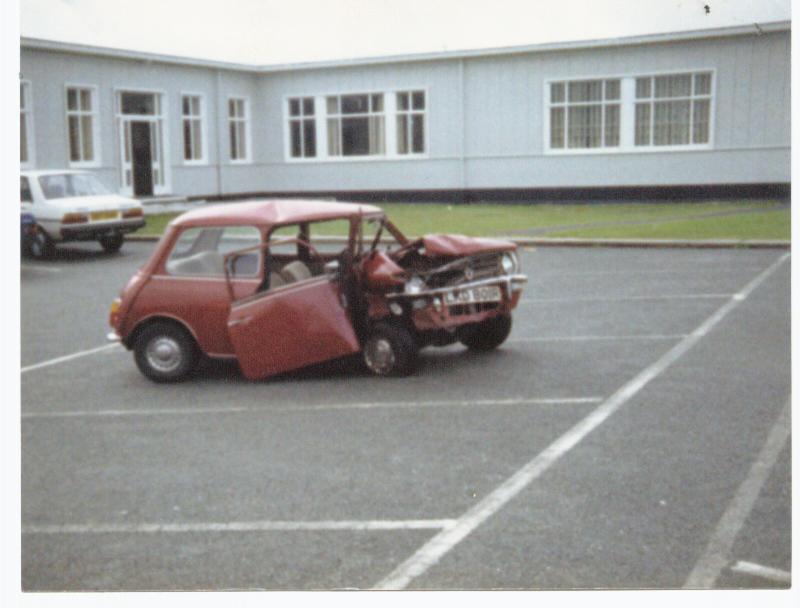right i'm in need of some advice again,
the engine on my mini is working fine if a little fast,....but now my breaks however seem to have completely dissapeared even if i pump the pedal and when moving are basically non existant! i've checked the level and there is loads of fluid inside i can't seem to find any leaks in the system but don't really know the most likely best places to look all the link-ups seem to be ok, the manual talks about making sure the hoses are connected, the only flexible hoses i seem to be able to find are the ones right near the wheels and breaks. also how do i check if the pedal is connected right perhaps that could be the cause? any suggestions i don't have a clue, the car is a 1984 city just to refresh anyone but i think i may have disks, how do you tell? i need breaks its now only weeks till i have to be back in liverpool and its a long way to go without breaks!! am starting to feel i should have just built a new car!
Breaks
Started by
dangermouse
, Sep 01 2004 07:30 PM
5 replies to this topic
#1

Posted 01 September 2004 - 07:30 PM
#2

Posted 01 September 2004 - 07:56 PM
its spelt brakes!....... 
#3

Posted 01 September 2004 - 08:13 PM
couple of questions to help us please.
1. what does the brake pedal feel like without the engine running? it should be solid, with about an inch or so movement of application to the pedal.
2. when you then turn on the engine, with your foot still on the brake pedal, you should feel the pedal go down a bit more, this is the vacuum working, does this happen?
to check if you have disc's or drum look at the brakes through the wheel, if the front and back are the same then you have all round drums, if you have disc's you will see a caliper at the front of the front wheels, if your not sure what the differance is have a look in the mini book.
also when you lift your bonnet, and look at the brake master cylinder, is the a round bowl like object behind it with a pipe going to the inlet manifold. check that that hasn't come loose from the inlet manifold, after you took the head off..
1. what does the brake pedal feel like without the engine running? it should be solid, with about an inch or so movement of application to the pedal.
2. when you then turn on the engine, with your foot still on the brake pedal, you should feel the pedal go down a bit more, this is the vacuum working, does this happen?
to check if you have disc's or drum look at the brakes through the wheel, if the front and back are the same then you have all round drums, if you have disc's you will see a caliper at the front of the front wheels, if your not sure what the differance is have a look in the mini book.
also when you lift your bonnet, and look at the brake master cylinder, is the a round bowl like object behind it with a pipe going to the inlet manifold. check that that hasn't come loose from the inlet manifold, after you took the head off..
#4

Posted 01 September 2004 - 08:37 PM
lol "brakes" right! its been a long day ok.
the brake pedal feels almost completely free with the engine off it can be easily compressed with little or no risistance, with the engine on at a slow speed even the floored break won't bring the car to an immediate holt
can't look directly through the wheel as i have GB alloys can you tell from the underside/inside of the wheel or is that what you meant?
will check the vacuum and the back of the master cylinder tomorow, thanks mate will let you know
the brake pedal feels almost completely free with the engine off it can be easily compressed with little or no risistance, with the engine on at a slow speed even the floored break won't bring the car to an immediate holt
can't look directly through the wheel as i have GB alloys can you tell from the underside/inside of the wheel or is that what you meant?
will check the vacuum and the back of the master cylinder tomorow, thanks mate will let you know
#5

Posted 01 September 2004 - 09:50 PM
A 1984 car won't have a vacuum servo, they weren't fitted 'till 89. So the thing with the pedal dropping after starting the car doesn't apply, and there are no vacuum hoses for the brake system. On an 84 you should have a front/rear system with 8.4" discs at the front and 7" spacered drums at the rear, with a vertical master cylinder. There are two types of master cylinder fitted in this period. One with a low fluid warning sensor in the cap and one with a line failure switch in the body. I believe only the low fluid type was used in British spec cars.
Does the pedal feel spongey or bouncey under foot? If so then bleed the brakes.
Take off a front wheel. You should see a brake disc and calliper rather than a drum. Look into the aperture in the forward side of the calliper. How much friction material is left on the pads? (remember brake pads on an '84 are very likely to contain asbestos, dont breathe the dust) There should be a groove through the material roughly in the middle to show you how much wear is left. If the groove is gone, the pads are worn out.
While the car is jacked up with the handbrake off (chock the other side wheels before releasing the handbrake) try to spin the rear wheel. It should spin but bring itself to a halt fairly quickly. If it just keeps spinning for a while then the rear brakes are out of adjustment or worn out.
Does the pedal feel spongey or bouncey under foot? If so then bleed the brakes.
Take off a front wheel. You should see a brake disc and calliper rather than a drum. Look into the aperture in the forward side of the calliper. How much friction material is left on the pads? (remember brake pads on an '84 are very likely to contain asbestos, dont breathe the dust) There should be a groove through the material roughly in the middle to show you how much wear is left. If the groove is gone, the pads are worn out.
While the car is jacked up with the handbrake off (chock the other side wheels before releasing the handbrake) try to spin the rear wheel. It should spin but bring itself to a halt fairly quickly. If it just keeps spinning for a while then the rear brakes are out of adjustment or worn out.
#6

Posted 02 September 2004 - 07:38 PM
Dangermouse, maybe you should be renamed to DangerMini, your car sounds lethal!
0 user(s) are reading this topic
0 members, 0 guests, 0 anonymous users

















